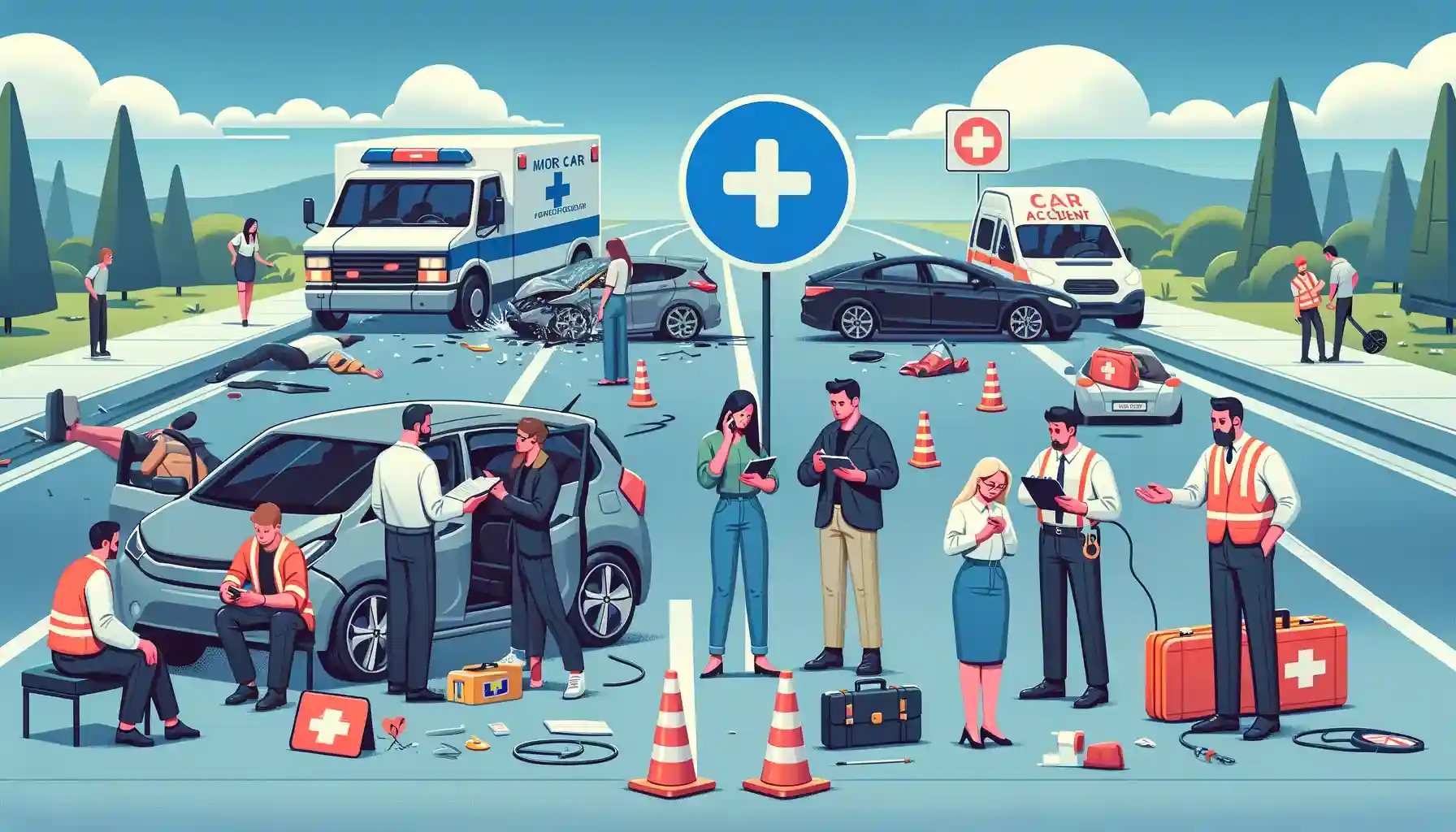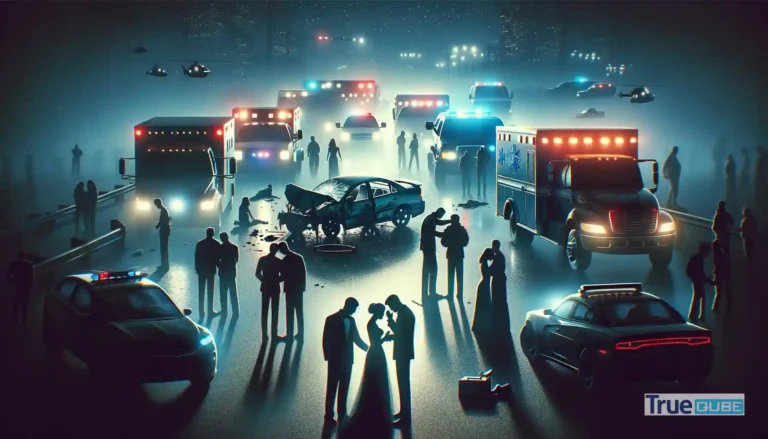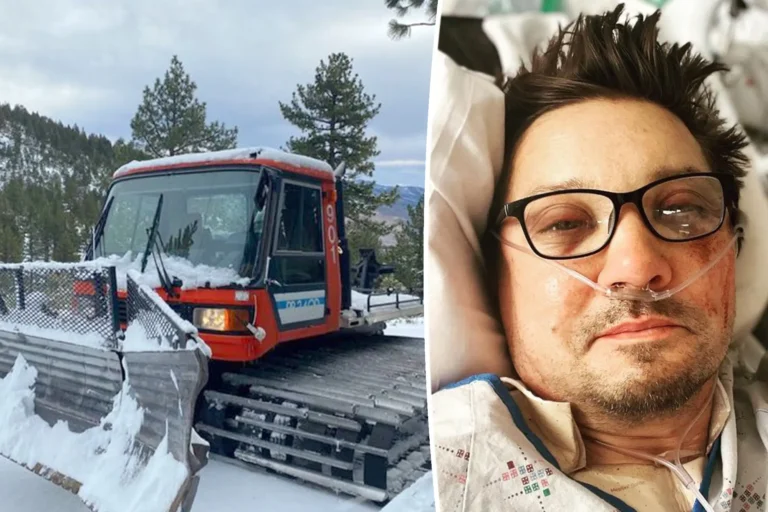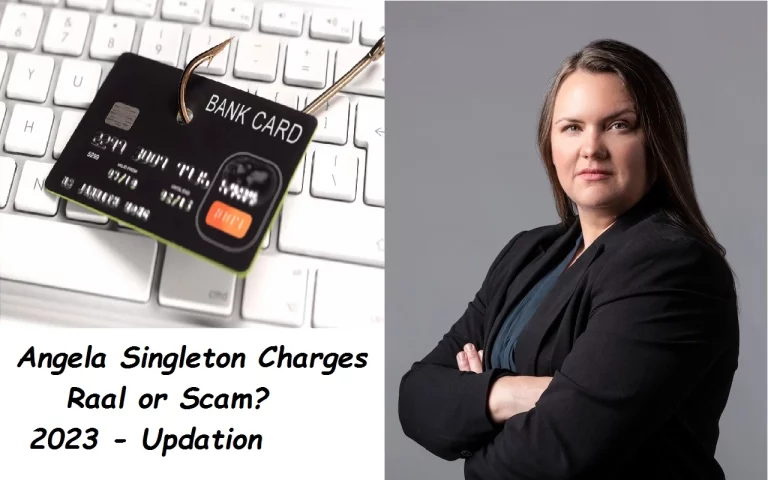What to Do When You Get in a Car Accident: A Step-by-Step Guide
Key Takeaways
- Remain calm and assess the situation for injuries and damage
- Call 911 if anyone is injured or the accident caused major damage
- Move vehicles to a safe location if possible and turn on hazard lights
- Exchange insurance and contact information with the other driver
- Take photos of damage, injuries, and the accident scene
- File a police report – this is crucial for insurance claims
- Notify your insurance provider as soon as possible
- Seek medical attention even for minor injuries
- Consult an attorney if the accident was serious or the other driver is uninsured
Getting in a car accident can be a scary and stressful experience. Even minor fender benders can leave you feeling shaken up. More serious accidents that result in injuries or major damage can be traumatic.
It’s important to know what to do after an accident so that you can ensure everyone’s safety, follow the proper legal procedures, and avoid problems with insurance claims down the road. Here is a step-by-step guide on how to handle a car accident responsibly and effectively.
Remain Calm and Check for Injuries
The first thing to do after getting in an accident is to remain calm. Take deep breaths and try to clear your head. Many accidents cause adrenaline to kick in, which can make it hard to think straight. Give yourself a moment to process what just happened.
Once you’ve had a chance to compose yourself, check to see if you or anyone else involved is injured. Unless accident injuries are severe, move vehicles out of the way of oncoming traffic first before examining people in depth. Ask if the other driver and any passengers are okay.
If there are injuries or you suspect injuries based on factors like airbag deployment, call 911 immediately. Even if injuries seem minor like small cuts, 911 should be called as complications can arise later. Getting immediate medical attention can make a big difference.
Move Vehicles to a Safe Location
If the vehicles are driveable and no one is injured, move them to a safe location out of the flow of traffic. This prevents secondary accidents and allows you to assess the situation in a safer environment.
- Pull over to the shoulder or find a nearby parking lot, driveway, or side street.
- Turn on your hazard lights and have the other driver do the same.
- If you can’t move your vehicle, activate hazard lights and use cones, flares, or warning triangles from your roadside emergency kit to alert other drivers.
Exchange Information
Once you’ve moved out of traffic and checked for injuries, exchange insurance and contact information with the other driver. This typically includes:
- Name and contact info like phone number, address, email
- Insurance company and policy number
- Driver’s license number
- License plate number
- Make, model, year, color of vehicles
Take down their information as well. Be sure to get the name and contact information of any passengers too. If the police come to the scene, they will also collect driver and insurance information.
Call the Police
You should call the police after any accident, even minor ones. A police report is crucial for insurance claims and establishes an official record of what happened.
- Police reports detail the date, time, location, road conditions, what happened, who was involved, injuries, damages, and more.
- Reports attribute fault and responsibility for the accident to the driver(s) who caused it.
- Insurance companies will use the police report to help determine who was at fault and how to proceed with claims.
After contacting the authorities, wait at the scene for the police to arrive. Do not leave until you’ve spoken with them and given your statement on what happened.
Document the Scene
While waiting for the police, take pictures of the accident scene from different angles. Capture images of damage to both vehicles, injuries, debris on the roadway, weather conditions, traffic signs or signals, and anything else relevant. Take wide shots and close-ups. Document the scene as thoroughly as possible.
- Use your smartphone camera or keep a disposable camera in your glovebox for this purpose.
- Take multiple photos to chronicle the scene from all sides.
- Give copies of the photos to the police when they arrive.
Pictures help document important details that could get disputed later. Insurance companies will also want photographic evidence when processing claims.
Seek Medical Attention
Even if your injuries seem minor after the accident, get medical attention promptly. The shock and adrenaline can mask serious injury in the moment. Signs to get medical help include:
- Bleeding cuts, scrapes or bruises
- Abdominal or chest pain
- Head, neck or back pain
- Loss of consciousness, even briefly
- Headache, confusion, blurred vision
- Difficulty breathing
- Numbness or tingling
Be sure to get evaluated at the scene by EMTs. Inform the police if you require medical assistance. Even if you refuse transport to a hospital at the scene, see a doctor immediately afterward. Soft tissue injuries often take hours or days to manifest symptoms. Ignoring symptoms and failing to get prompt medical care can negatively impact any injury claims.
Notify Your Insurance Provider
Contact your insurance company’s claims hotline as soon as possible after the accident. There are typically phone numbers on your insurance card or printed on policy documents. Be prepared to provide details like when and where the accident occurred, other driver’s information, injuries, vehicle damage and more.
- Notifying early minimizes the chances of surprises down the road that can complicate the claims process.
- Many policies have specific time limits for when you must report the accident – usually within 24 hours.
- An insurance agent can walk you through next steps like taking your car to an approved body shop for damage appraisal.
Cooperate fully with your insurer’s investigation of the claim. Keep copies of accident photos, police reports, medical records and bills handy to facilitate claims processing. Your insurance company needs all pertinent details to handle your claim properly.
Consult an Attorney
It’s wise to at least consult a personal injury or auto accident attorney after any serious accident where injuries or major damage occurred. An attorney helps protect your legal rights if things get contentious with insurance companies during claims negotiations. They can also determine if you are entitled to additional compensation. Consider hiring an attorney under these circumstances:
- Accidents causing serious or permanent injuries
- Claims involving a death
- Hit-and-run or uninsured drivers
- Disputes with insurance providers over accident fault or claim amounts
- Prior injuries or accidents exacerbated by the collision
- Accidents involving commercial vehicles like big rigs
An attorney’s expertise can make all the difference in achieving an optimal claims settlement. They deal with insurance companies regularly and understand full compensation entitled under the law.
Drunk Driving Accidents
If you suspect the other driver was under the influence of drugs or alcohol, alert the police immediately. Do not let an intoxicated driver leave the scene – this is against the law. Take note if you smell alcohol, see open containers in the car, or notice slurred speech or lack of balance. Their intoxicated state will be relevant to determining fault and damages.
What If You’re At Fault?
Don’t admit fault or apologize to the other driver. Anything you say can be used against you when insurance companies determine accident responsibility. Stick to the facts and avoid speculating on fault pending a full investigation. If you’re issued a citation by police, resolve the ticket with the court system separately from the insurance claims process.
Even if an accident was clearly your fault, do not pay anything to the other driver directly. All damages need to be handled through proper insurance channels. Paying out-of-pocket can be considered accepting liability – consult your insurer before doing anything.
Leased Vehicle Accidents
There are a few extra steps to take if you get in an accident with a leased vehicle:
- In addition to your insurance company, notify the leasing company of the accident.
- Use repair shops approved by the leasing company. They will want to inspect repairs before accepting the vehicle back at the end of the lease.
- Review your lease agreement – you may have additional responsibilities like paying a deductible for any repairs.
What If the Other Driver is Uninsured?
Unfortunately, many drivers are on the road illegally without insurance. If the driver who hit you does not have active policy information, first file a claim under your own uninsured motorist coverage if you carried this protection. Your insurer will investigate the situation and may cover repairs if the accident was clearly the other party’s fault.
If uninsured coverage does not apply or the claim is denied, you may have to take legal action directly against the at-fault driver. Consult an attorney on how to recover damages from an uninsured motorist. Having them cover costs directly may be challenging.
Accidents in Company Vehicles
If you get in an accident while driving a vehicle owned by your employer, there are additional considerations:
- Report the accident to your manager or employer’s transportation department ASAP in accordance with company policy.
- Obtain a copy of the police report and any other documentation to submit to your employer.
- The company insurance will handle repairs and claims for company vehicle damage.
- Your health insurance will handle medical bills if you’re injured, not auto insurance.
- You may be asked for a drug test or additional details from employer.
Follow your company’s specific procedures for the accident and cooperate fully with the process. Reach out with any questions on how they handle claims for accidents in employer provided vehicles.
Dealing with Accident-Related Post-Traumatic Stress
Even minor car accidents can leave you feeling anxious while driving for some time afterwards. Serious collisions often cause post-traumatic stress symptoms like:
- Flashbacks to the accident
- Nightmares
- Depression or emotional changes
- Fear of driving or being a passenger
- Trouble sleeping
- Difficulty concentrating
Seek help from a mental health professional if the accident is severely impacting your mental state or daily functioning. Talk therapy is very effective for working through driving anxiety, flashbacks, and other emotional issues stemming from a traumatic crash. Don’t force yourself to drive until you feel mentally ready.
Preventing Future Accidents
While not every collision is avoidable, practicing defensive driving and remaining alert helps decrease accident risk:
- Don’t drive drowsy – pull over if you’re nodding off
- Avoid distractions like cell phones
- Allow ample stopping distance between cars
- Check blind spots and mirrors frequently
- Signal every lane change or turn
- Drive for conditions – slow down on wet roads
Keep your vehicle well maintained with regularly scheduled service to avoid malfunctions or breakdowns. Inspect tires often and replace worn treads. Follow all traffic laws and speed limits.
Installing a dash cam can also provide video evidence if you’re in another accident. Having a recording of what happened can help protect you during claims disputes.
Frequently Asked Questions
Should I admit fault or apologize to the other driver?
No. Anything you say can be used against you when insurance companies determine fault. Do not speculate about accident responsibility.
What if the other driver doesn’t have insurance?
File a claim under your own uninsured motorist coverage if you carried this protection. If denied, consult an attorney about pursuing damages from the uninsured driver.
When should I get a lawyer involved?
If the accident caused serious injuries or property damage, if the other driver is uninsured, or if the insurance claim becomes disputed. An attorney protects your rights.
Can I provide my own accident photos to insurance?
Yes. Thoroughly photo document the accident scene, vehicles, injuries, road conditions, and property damage. Give copies of photos to insurers.
What if the other driver leaves the scene?
Get their license plate number and contact police immediately. Leaving the scene of an accident is against the law. Try to gather as much identifying information as possible.
Should I see a doctor even if I’m not hurt?
Yes! Soft tissue injuries often take days or weeks to fully manifest. Get checked out promptly to avoid problems with injury claims down the road.
How long do I have to report the accident to insurance?
Most policies require you to report the claim within 24 hours. Read your policy documents or call your insurer to verify exact time limits for reporting.
Who covers medical bills if I’m hurt while driving a company car?
Your personal health insurance, not the company auto policy, will handle medical claims. Submit bills to your health insurer.
Following these steps can help you safely and effectively handle a car accident. Staying calm, notifying the right authorities, and thoroughly documenting the incident goes a long way toward smoother insurance claims. Knowing what to do puts you back in control.
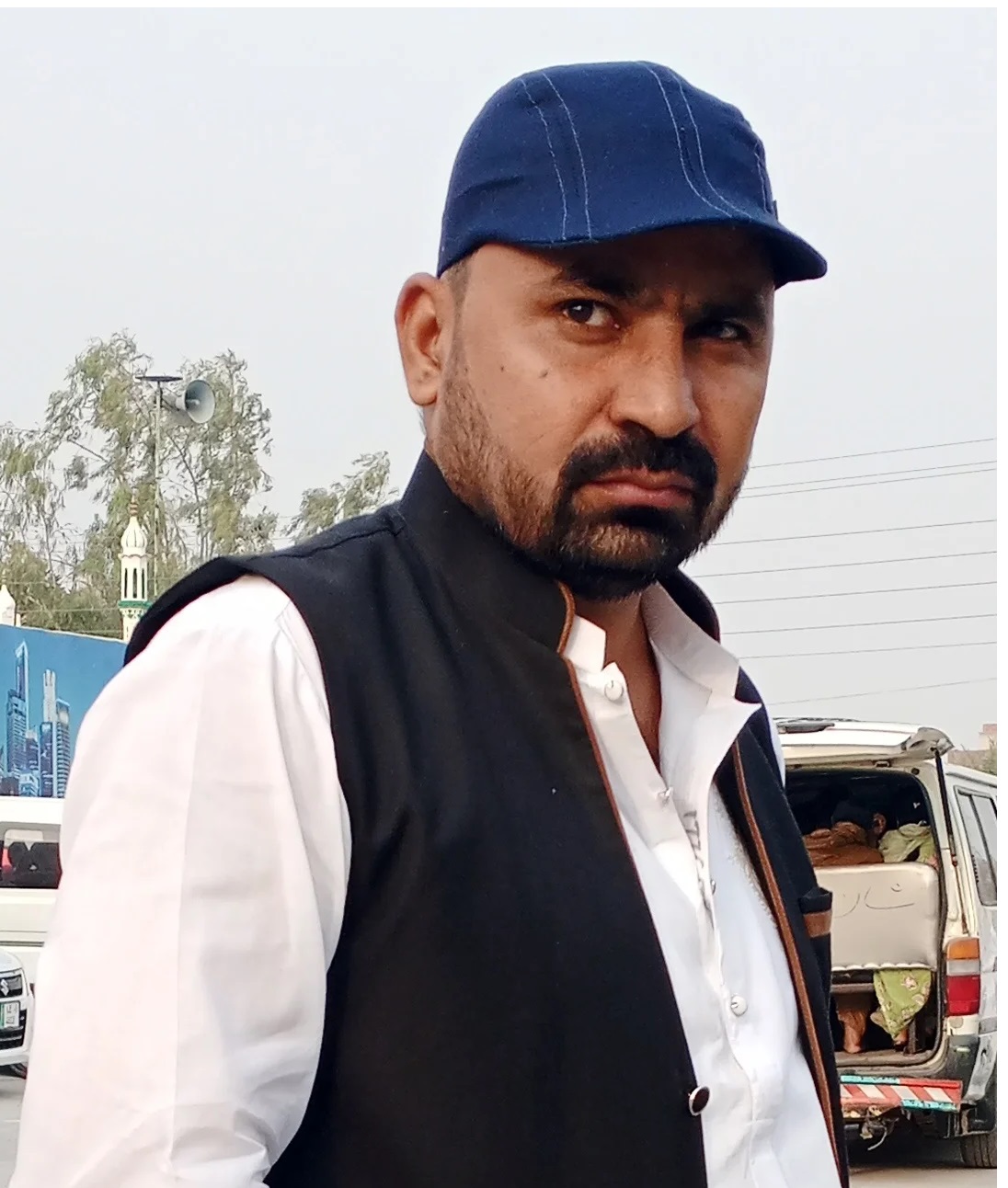
Shahid Maqsood, an MBA and Master in Mass Communications, is a seasoned writer with over a decade of experience. Specializing in news and celebrity coverage, he brings a unique perspective from his love for hunting and camping. His work spans multiple platforms like dosttrusty.com and newsbreak.com,Quellpress.com , airriflehunting, and bruitly.com showcasing his versatility and depth. Shahid’s insightful articles reflect his expertise, authoritativeness, and trustworthiness, making him a respected and reliable voice in digital content creation. His contributions engage and inform readers, embodying professionalism and passion in every piece.

